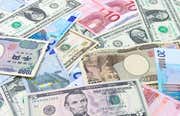Pairs trading is a market-neutral trading strategy that matches a long position with a short position in a pair of highly correlated instruments such as two stocks, exchange-traded funds (ETFs), currencies, commodities or options. Pairs traders wait for weakness in the correlation and then go long the under-performer while simultaneously short selling the over-performer, closing the positions as the relationship returns to statistical norms.
The strategy’s profit is derived from the difference in price change between the two instruments, rather than from the direction each moves. Therefore, a profit can be realized if the long position goes up more than the short, or the short position goes down more than the long (in a perfect situation, the long position rises and the short position falls, but that’s not a requirement for making a profit). It’s possible for pairs traders to profit during a variety of market conditions, including periods when the market goes up, down or sideways – and during periods of either low or high volatility. (See also: 4 Factors That shape Market Trends.)
The origin of Pairs Trading
The origin of pairs trading is generally credited to a group of computer scientists, mathematicians and physicists assembled by Wall Street’s Morgan Stanley & Co. in the early to mid-1980s. The team, which included computer scientists Gerry Bamberger and David Shaw, and quant trader Nunzio Tartaglia, was brought together to study arbitrage opportunities in the equities markets, employing advanced statistical modeling and developing an automated trading program to exploit market imbalances.
Central to their research was the development of quantitative methods for identifying pairs of securities whose prices exhibited similar historical price movements, or that were highly correlated. While the team’s resulting black box was traded successfully in 1987 – the group made a reported $50 million profit for Morgan Stanley – the next two years of trading saw poor enough results that in 1989 the group disbanded.
Over the years, pairs trading has gained modest attention among individual, institutional and hedge fund traders as a market-neutral investment strategy. This is largely due to the advent of the Internet and advancements in trading technology. These two factors have helped level the playing field for individual investors, making real-time market data and powerful tools both available and affordable to more than just the institutional traders. Of course, the large hedge funds and institutional traders still have advantages (for example, robust proprietary systems and economies of scale). However, today’s market participants – whether retails traders or a team of highly-skilled mathematicians in a quant shop – have access to real-time financial market data, direct access trading systems, advanced computer modeling and the ability to automate complex trading strategies.
Using technology – as well as drawing on fundamentals, probabilities, statistics and technical analysis – pairs traders attempt to identify relationships between two instruments, determine the direction of the relationship and execute trades based on the data presented. Here, we introduce pairs trading, market-neutral investments, arbitrage and provide an example of a pairs trade. (For related reading, see: The Secret to Finding Profit in Pairs Trading.)
Pairs Trading: Market Neutral Investing
-
 Trading
TradingStrategies for part-time forex traders
Learn strategies for part-time forex traders to profit even with an inconsistent trading schedule. Find the information you need today! -
 Trading
TradingWhat Makes the EUR/USD A Risky Trade Now?
What are the current risks of trading the EUR/USD pair? The Fed may raise interest rates this summer and the ECB has begun a quanitative easing program.



